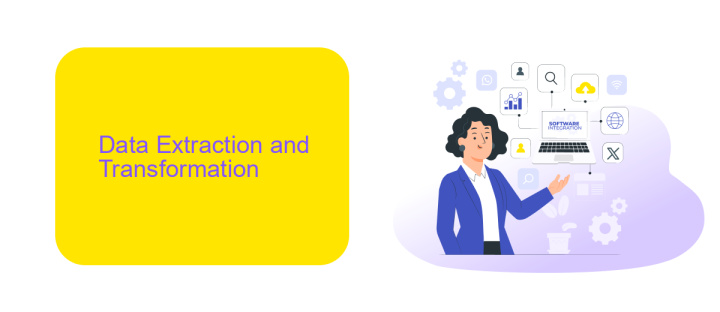HVR Vs Fivetran
In the rapidly evolving landscape of data integration, choosing the right tool is crucial for seamless data management. This article delves into a comparative analysis of HVR and Fivetran, two leading platforms in the industry. By examining their features, performance, and use cases, we aim to provide insights that will help organizations make informed decisions tailored to their specific needs.
Introduction
In today's data-driven world, businesses rely heavily on efficient data integration tools to streamline their operations. Two prominent players in this space are HVR and Fivetran. Both platforms offer robust solutions for data integration, but they cater to different needs and use cases. This article aims to compare HVR and Fivetran, shedding light on their features, strengths, and weaknesses.
- HVR: Known for real-time data replication and high-volume data transfer capabilities.
- Fivetran: Specializes in automated data pipelines with minimal maintenance requirements.
- ApiX-Drive: A versatile tool that simplifies the integration process across various platforms.
Choosing the right data integration tool can be a daunting task, given the myriad of options available. By understanding the unique offerings of HVR and Fivetran, businesses can make informed decisions tailored to their specific needs. Additionally, tools like ApiX-Drive can further enhance integration processes, providing seamless connectivity and automation.
Data Extraction and Transformation

Data extraction and transformation are critical processes in the ETL (Extract, Transform, Load) pipeline, and both HVR and Fivetran offer robust solutions in this domain. HVR specializes in real-time data replication, ensuring that data is continuously extracted from various sources and transformed as needed before being loaded into the target system. This is particularly useful for organizations that require up-to-date data for analytics and decision-making. HVR's real-time capabilities reduce latency and ensure data consistency across different platforms.
Fivetran, on the other hand, focuses on simplifying the data extraction and transformation process by offering pre-built connectors to a wide range of data sources. This means less manual configuration and more automation, allowing businesses to quickly integrate their data sources and start analyzing data faster. Services like ApiX-Drive can complement Fivetran by providing additional integration capabilities, making it easier to connect various applications and automate workflows. Both HVR and Fivetran provide valuable tools for managing data, but their approaches cater to different needs and use cases.
Data Loading and Synchronization

When it comes to data loading and synchronization, both HVR and Fivetran offer robust solutions to ensure your data is always up-to-date and accurately transferred. HVR specializes in high-volume data replication, making it ideal for enterprises with large datasets. Fivetran, on the other hand, excels in simplifying the ETL process, offering pre-built connectors for various data sources.
- HVR provides real-time data replication, ensuring minimal latency.
- Fivetran automates data extraction and loading, reducing manual intervention.
- Both platforms support a wide range of data sources and destinations.
- Fivetran offers a user-friendly interface, while HVR provides advanced customization options.
- Integration tools like ApiX-Drive can further streamline the synchronization process by automating workflows between different applications.
Choosing between HVR and Fivetran depends on your specific needs. If real-time replication and handling large volumes of data are your priorities, HVR is the better choice. However, if you seek an easy-to-use platform with extensive ETL capabilities, Fivetran is more suitable. Additionally, leveraging integration tools like ApiX-Drive can enhance your data synchronization strategy, making it even more efficient.
Pricing and Support

When comparing HVR and Fivetran, it's essential to consider both pricing and support options. Both platforms offer robust data integration solutions, but their pricing models and support services differ significantly.
HVR typically offers a more customizable pricing model, often based on the specific needs and scale of your organization. In contrast, Fivetran provides a more straightforward, usage-based pricing model that can be easier to predict and manage for many businesses.
- HVR: Customizable pricing based on organizational needs.
- Fivetran: Predictable, usage-based pricing model.
- ApiX-Drive: Flexible integration services to simplify setup.
Support is another critical factor. HVR offers extensive support options, including dedicated account managers and comprehensive training programs. Fivetran also provides robust support, with 24/7 customer service and detailed documentation. Additionally, services like ApiX-Drive can assist in setting up and managing integrations, ensuring a smoother experience regardless of the platform you choose.
Conclusion
In conclusion, both HVR and Fivetran offer robust solutions for data integration and replication, each with its unique strengths. HVR excels in real-time data replication and complex data environments, making it a strong choice for enterprises with demanding data needs. On the other hand, Fivetran stands out for its ease of use, automated maintenance, and wide range of pre-built connectors, which are ideal for businesses looking for a hassle-free integration experience.
Choosing between HVR and Fivetran ultimately depends on your specific requirements and technical environment. For those who need additional customization and flexibility, services like ApiX-Drive can further enhance your integration capabilities by providing tailored solutions that bridge the gap between various platforms. By carefully evaluating your needs and leveraging the right tools, you can ensure a seamless and efficient data integration process that supports your business objectives.
- Automate the work of an online store or landing
- Empower through integration
- Don't spend money on programmers and integrators
- Save time by automating routine tasks
FAQ
What is the primary difference between HVR and Fivetran?
Can both HVR and Fivetran handle real-time data integration?
Do HVR and Fivetran require significant manual setup and maintenance?
Are there alternatives to HVR and Fivetran for automated data integration?
Which tool is more cost-effective for small to medium-sized enterprises?
Routine tasks take a lot of time from employees? Do they burn out, do not have enough working day for the main duties and important things? Do you understand that the only way out of this situation in modern realities is automation? Try Apix-Drive for free and make sure that the online connector in 5 minutes of setting up integration will remove a significant part of the routine from your life and free up time for you and your employees.


